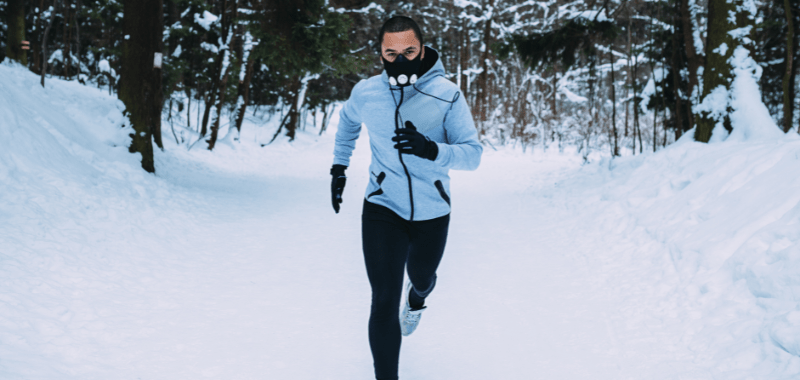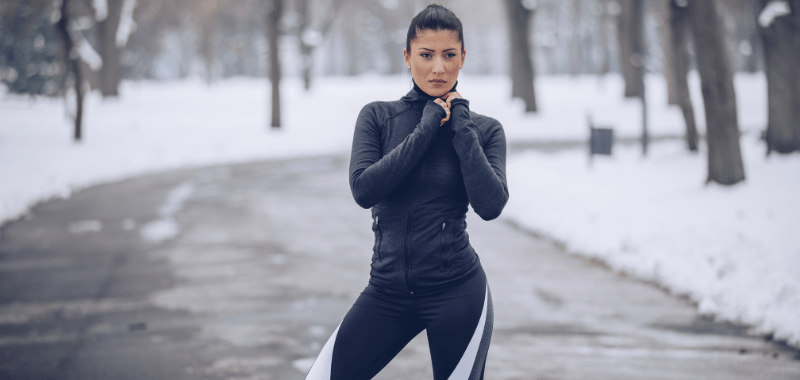Tabla de contenido
Running is a viral activity today, and the weather is essential when the runner must take the pertinent measures to start practicing sports.
In many aspects, the specialists affirm that the day running time is indistinct. However, other climatic elements must also be considered in addition to the time of day you run.
In places with intense cold, the lovers of this activity do not find obstacles to going out for daily running. Still, in these climates, the care of the organism requires some extraordinary measures to advance in the issues of training and physical displacement. Taking care of the body is always a priority for the athlete, and doing it responsibly requires a real awareness of the climatic context and the observations that can be made of the surface and the environment.
1.- Breathing
One of the main objectives of the runners during the training days is to acquire a rhythm of continuity, which is of great importance in carrying out the activity. In the incorporation and development of the rhythm, breathing occupies a place of great importance. Breathing correctly and accompanying the rhythm of the physical movement.
Breathing is crucial and decisive in advancing in training. However, in freezing climates, the respiratory tract must also be protected since the displacement incorporates a significant amount of air necessary for the organism.
2.- Protect the respiratory tract
To protect the respiratory tract, many runners decide to use high-neck overalls or cover the mouth to reduce the entry of cold air. Many runners say that in freezing weather when they run without taking measures to protect their breathing, they feel discomfort throughout the body as cold air enters the body in this situation.
The pharynx and stomach discomfort typically prevent runners from developing the activity. Running while protecting the respiratory tract is essential to maintaining training opportunities and a harmonious running routine without setbacks related to temperature and weather.

3.- Protects your entire body
When we are exposed to intense cold, it is advisable to wear clothes that protect your body. According to experts, the cold enters the feet and is lost through the head, hands, and torso, so you should wrap them well. Knees, so prone to injuries, should also be kept warm, as it is an area that does not have capillaries and, therefore, cools quickly. You can use long tights or compression garments that fit your body, keep you warm, and prevent chafing. You can also use it.
4.- Cover your hands and head
You can wear gloves that are not too thick and wear your head with a hat to protect your hands. Protecting yourself with a scarf to cover your neck, ears, mouth, and nose is also advisable. It will be another way to filter the cold air you breathe to protect yourself better.
5.- Focus your training on endurance
The Running School assures that during periods of intense cold, it is ideal to focus training on endurance work and long sessions. Combining it with series training is not recommended because when running on wet or icy terrain, you risk slipping and injuring yourself when you want to increase your speed. The other reason not to do it is that it doesn’t seem to be a good idea between sets you should take breaks and in cold weather. Resting means getting cold, which will only make you stiffen up and increase the likelihood of going home with an injury,” says Escuela de Running.
6.- Other must-know tips
Finally, we add some tips you should not miss when running in cold climates.

In places with intense cold, running enthusiasts do not find obstacles to going out for a daily run, but in these climates, the care of the body requires some extraordinary measures to advance in the issues of training and physical displacement.
For all those runners preparing for winter, here are ten tips on warming up, clothing, and nutrition, among other things, so you can run and enjoy running during cold days.
- Don’t forget to warm up before training:
Warm up indoors for 10 to 15 minutes if the temperature is below 5°. This way, when it’s time to go running, your body temperature will be high, and your muscles will be in optimal conditions for the activity. - Consume more calories:
It is important to follow a diet that favors the production of calorific energy by increasing the intake of carbohydrates and proteins to compensate for the calories spent maintaining body temperature. - Take care of hydration:
In low temperatures, the sensation of dehydration decreases, and you will wear more clothing to protect yourself from low temperatures, so be mindful of consuming water regularly to avoid dehydration. - Take care of your respiratory tract:
The body does not respond well to cold; low temperatures can significantly affect the respiratory tract. Many runners wear turtlenecks or other clothing that covers the mouth and nose area to reduce the entry of cold air. - Dress with a few degrees Celsius to spare:
It is easy to wear more clothing than necessary during cold weather. However, consider that when running, your body temperature will increase. Dress accordingly to avoid sweating too much and overheating your body. - Use several layers of clothing:
It is preferable to wear several not-so-thick items of clothing rather than a single thick press. This, in addition to allowing better ventilation and heat dissipation, will allow you to remove a garment if you feel hot. - Wear light, reflective clothing:
During the winter, it gets light later and dark earlier. If you can’t modify your training schedule for daylight hours, try to wear light, reflective clothing that will allow you to stand out and be visible to drivers. - Use petroleum jelly on your face and ears:
This will protect your skin from being “cut” by the wind and cold. - At the end of the session, don’t forget to stretch your muscles:
Do your usual stretching in an enclosed indoor place so that you can take care of your body temperature so that it does not drop sharply and injure yourself. If you don’t have an indoor place to do it, keep running until you reach one where you can stretch.
Do you have any other tips for running in cold weather? Please share them with us!
Source: Active.com, Running.es
Looking for a plan that trains with you, not against you?
At running.COACH, we don’t just build a schedule. We create a smart, living plan that evolves with you. It understands your level, your race goals and your real life. Whether you sync your GPS watch or train straight from our iOS or Android app, your plan adjusts automatically as you improve.
From day one, you’ll feel the difference:
- A fully personalized, dynamic plan designed for you.
- Automatic sync and effortless workout tracking.
- Real-time updates when life happens, including missed sessions, new races or schedule changes.
- Simple, science-backed guidance to train smarter and recover faster.
🎁 Start today and enjoy your first 30 days free.
Because the best training plan isn’t one you follow. It’s one that follows you.app.











0 Comments